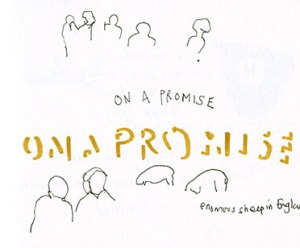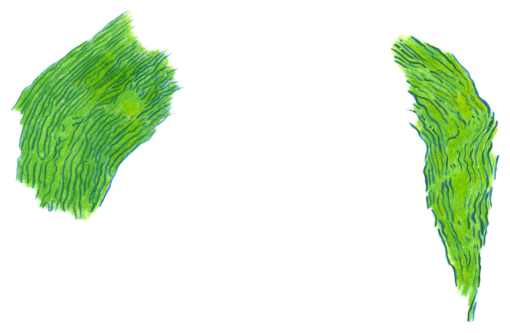The boat is late. The tide is touch-and-go. Hot weather has dropped the levels in the Tweed and the Paxton-Berwick shuttle is waiting for safe passage.
We’re five miles inland on the river at Paxton House, among landscaped gardens, fields of sheep, a tractor mid-harvest over on the English bank. A seaboat in this calm farmland idyll seems unlikely, almost alien. But here she comes, On a Promise, a yellow-white skiff skippered by David Thompson, fresh from the port at Berwick. David has a quick catchup with the netsmen and then it’s off down the widening Tweed to the sea.

Martha Andrews, Paxton curator. Image © Kate Foster
The crew for the first Riverside Meeting: Kate, visual artist, Sandy, musician, Jane, theatre maker, Claire, dance maker, Bridget, poet, Jules, playwright, Cath, textile designer, Michael, venue manager, and Janet, a crime writer scouting for likely murder haunts.
Martha Andrews, the Paxton curator, fills us in. Paxton is one of only two netting stations left on the River Tweed, from its heyday of around 80. George and Jo Purvis run a small commercial fishing operation – the rest have been bought out for ‘the rods’.

Netting at Paxton. Image © Michael Scott
George spots a change of wind, the ripple of salmon heading upstream. Reading the river, its subtle signs. The rowboat heads out in a wide loop, the nets splashing cork by cork from the boats. As the team pull the net in, the corks dip – a sign of a catch. Once landed, the fish are rushed to the anaesthetic-tub and tagged by Tweed Foundation. Ronald Campbell’s industrial strength stapler plants a yellow plastic cable in the fish’s side. The groggy fish comes to in oxygenated water and is ferried back to the Tweed.

Dr Ronald Campbell of Tweed Foundation tagging a salmon. Image © Michael Scott
Ecologist Melanie Findlay is an otter specialist. A nearby bridge looks a likely spot. Sure enough, otter spraint. It has an earthy, metallic smell. Kate makes spraint-marks in her notebook. We hear about Himalayan balsam and Japanese knotweed, and compare with sycamore, ground elder, sea glass… will today’s scourges also be transformed by time?

Ecologist Melanie Findlay at Paxton. Image © Michael Scott
On the boat, we pass the abandoned shiels of the netting industry, some just roofless ruins, some renovated as holiday retreats. At some point, our lips start to taste of salt.
Rounding the last meander, we see the bridges of Berwick as we’ve never seen them before. From low in the water, passing beneath the sleek A1 concrete, the Victorian railway arches, the ancient pink sandstone, it’s as though history unfolds. Two territories, one each bank, connected and divided by a river.
Someone mentioned the word ‘rival’ derives from the Latin for river. ‘Rivalis‘ – ‘an adversary in love’. Neighbours in competition. Maybe our forebears once stood on the bank each side? Waving, shaking fists, and then rowing across, bartering fish, grain, daughters.

Arriving at Berwick. Image © Claire Pencak

Bridges, Berwick. Image © Michael Scott

Bridges, Berwick

Sheep and swans from the Paxton boat. Image © Michael Scott

Tweed shiel and salmon lookout. Image © Michael Scott

George Purvis laying nets. Image © Michael Scott

Paxton netting team. Image © Michael Scott

















